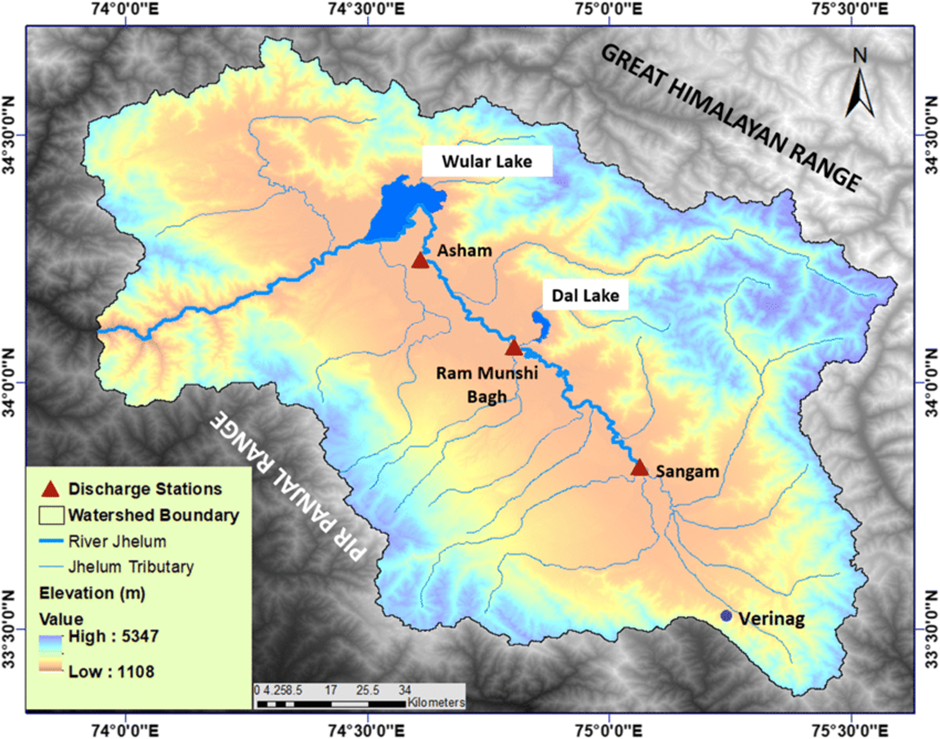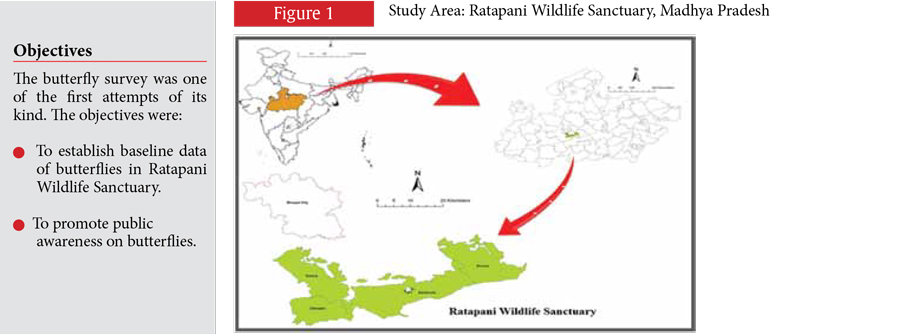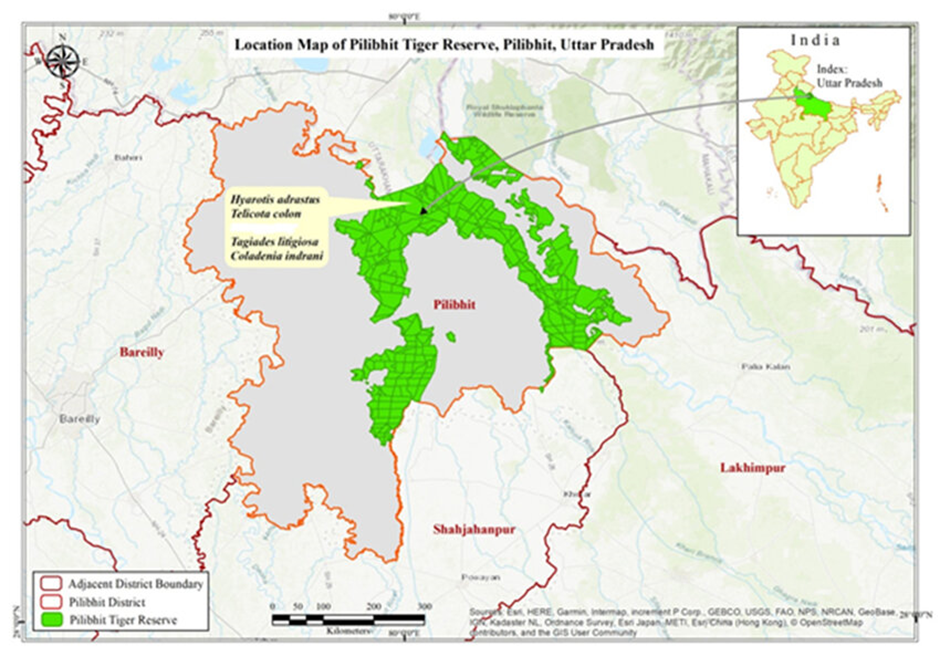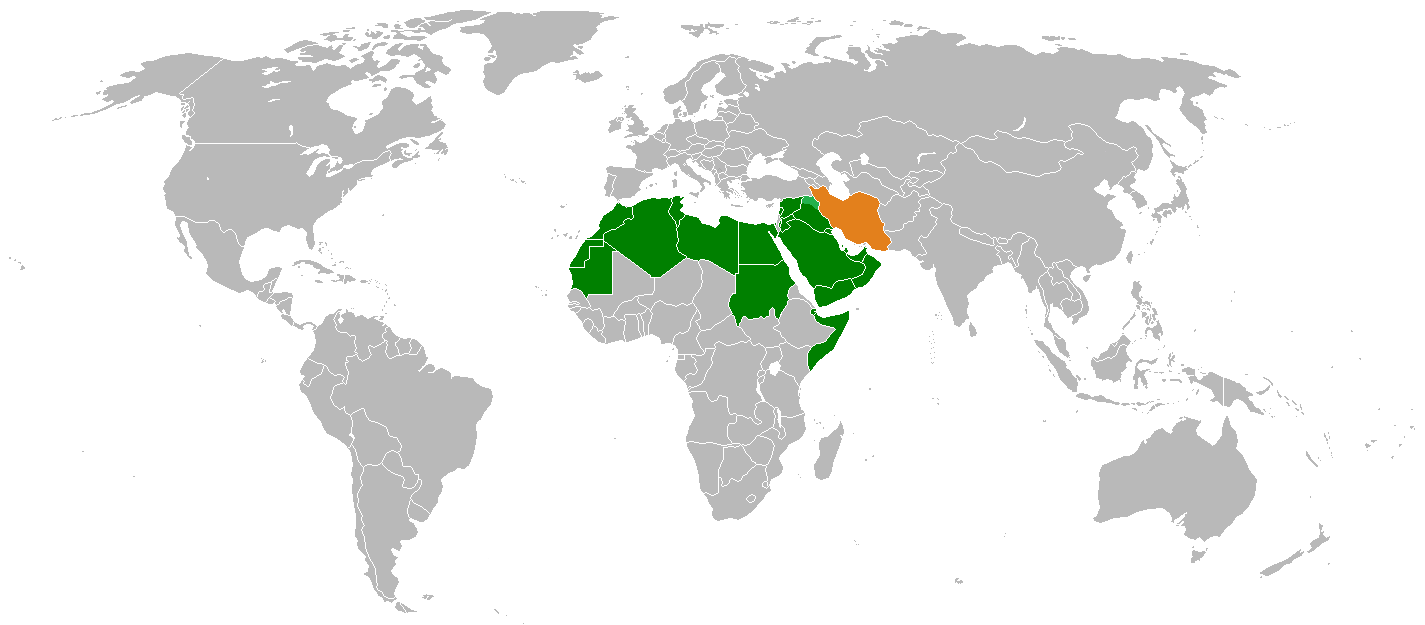- Courses
- GS Full Course 1 Year
- GS Full Course 2 Year
- GS Full Course 3 Year
- GS Full Course Till Selection
- Online Program
- GS Recorded Course
- NCERT (Recorded 500+ Hours)
- Polity Recorded Course
- Geography Recorded Course
- Economy Recorded Course
- AMAC Recorded Course
- Modern India, Post Independence & World History
- Environment Recoded Course
- Governance Recoded Course
- Science & Tech. Recoded Course
- International Relations and Internal Security Recorded Course
- Disaster Management Module Course
- Ethics Recoded Course
- Essay Recoded Course
- Current Affairs Recoded Course
- CSAT
- 5 LAYERED ARJUNA Mentorship
- Public Administration Optional
- ABOUT US
- OUR TOPPERS
- TEST SERIES
- FREE STUDY MATERIAL
- VIDEOS
- CONTACT US
PLACES IN NEWS 17th DECEMBER 2024
PLACES IN NEWS 17th DECEMBER 2024
Aravalli Green Wall Project
Why in news?
- The Haryana Government, under the Union Environment Ministry’s Aravalli Green Wall Project, aims to restore 35,000 hectares of degraded Aravalli land, including 18,000 hectares in Gurgaon, across four states.
About Aravalli Green Wall Project:

- The Aravalli Green Wall Project is a significant initiative aimed at restoring ecological balance and addressing environmental challenges across the Aravalli Hill Range.
- Spanning 1,400 km with a width of 5 km, it covers the states of Haryana, Rajasthan, Gujarat, and Delhi, combating land degradation and desertification caused by urbanisation, mining, and deforestation.
- The project holds immense geographical significance as the Aravalli Range acts as a natural barrier preventing the expansion of the Thar Desert into northern India.
- By creating a buffer zone, it reduces soil erosion, stabilises the terrain, and strengthens the region’s ecological resilience.
- The initiative targets over 1.15 million hectares of degraded land by 2027, promoting afforestation and improving groundwater recharge in this semi-arid region.
- From an environmental conservation perspective, the project emphasises planting indigenous tree species to restore biodiversity. It aims to rejuvenate water bodies and local stream catchments, which improves soil moisture and drought resilience.
- In Haryana alone, 75 water bodies will be developed in districts like Gurgaon, Faridabad, Rewari, and Mahendergarh, enhancing the overall hydrological cycle and climate resilience.
- The project aligns with sustainable development goals by creating green employment opportunities for local communities. It fosters sustainable livelihoods through activities like afforestation, water conservation, and environmental stewardship.
- The government has appointed Van Mitras to raise awareness and involve younger generations in conservation efforts, ensuring long-term community engagement.
- The initiative is inspired by Saudi Arabia’s green initiatives and Africa’s Great Green Wall; this multi-state collaboration showcases a robust approach to addressing environmental degradation.
- By promoting afforestation, improving soil fertility, and enhancing water availability, the project contributes to both ecological stability and economic development, balancing human needs with nature preservation.
Ashtamudi Lake
Why in news?
- The State Level Monitoring Committee (SLMC), Kerala, appointed by the NGT, has urged time-bound projects to curb illegal discharge of biowaste into Ashtamudi Lake, Kollam, which caused an algae bloom and a mass fish kill on October 27.
About Ashtamudi Lake:

- Ashtamudi Lake is a prominent wetland ecosystem located in the Kollam district of Kerala. It is the second-largest estuarine system in Kerala, stretching over 61.4 square kilometres and comprising an intricate network of canals, backwaters, and lakes.
- The lake's name, "Ashtamudi," translates to "eight coned," referring to its eight branches, which converge into the Arabian Sea, making it a significant geographical feature of southern Kerala.
- The lake supports a diverse range of flora and fauna. Its water ecosystem nurtures rich mangrove vegetation like Rhizophora and Avicennia, which act as breeding grounds for numerous aquatic species.
- The lake is home to various fish species, crustaceans, and molluscs, supporting the livelihoods of local fishing communities. Migratory birds, such as herons, egrets, and kingfishers, frequent the lake, adding to its ecological diversity. Additionally, its shores are lined with lush coconut palms, adding to the scenic beauty.
- Ecologically, Ashtamudi Lake is vital for maintaining the region's biodiversity and serves as a natural buffer against coastal erosion.
- It acts as a sink for nutrients and sediments while supporting local agriculture, fishing, and tourism. The lake plays a significant role in groundwater recharge and helps regulate the local climate, contributing to environmental stability.
- In recognition of its ecological importance, Ashtamudi Lake was designated a Ramsar Site in 2002, acknowledging it as a wetland of international significance.
- However, rising pollution levels, including the discharge of biowaste and faecal sludge, have led to environmental challenges, such as algae blooms and fish kills, threatening the lake's delicate ecosystem.
Other important Ramsar sites in India:
|
Ramsar Site |
State |
Key Features |
|
Renuka Lake |
Himanchal Pradesh |
The smallest Ramsar site in India; a freshwater lake surrounded by forests, home to diverse fish and bird species. |
|
Rudrasagar Lake |
Tripura |
A freshwater lake critical for waterbirds; supports rich biodiversity and is a source of livelihoods for locals. |
|
Loktak Lake |
Manipur |
Known for its phumdis (floating vegetation), this unique freshwater lake is home to the endangered Sangai deer. |
|
Wular Lake |
Jammu & Kashmir |
One of the largest freshwater lakes in Asia; plays a key role in flood control and supports rich biodiversity. |
|
Kolleru Lake |
Andhra Pradesh |
A large freshwater lake that serves as a habitat for resident and migratory birds; crucial for aquaculture. |
|
Bhoj Wetland |
Madhya Pradesh |
Comprising two lakes, Upper and Lower Bhoj, it supports numerous aquatic species and migratory birds. |
|
Pong Dam Lake |
Himachal Pradesh |
A reservoir on the Beas River; serves as a winter habitat for migratory birds, including bar-headed geese. |
|
Sasthamkota Lake |
Kerala |
The largest freshwater lake in Kerala, known for its purity as it has no major inflow or outflow streams. |
|
Keoladeo National Park |
Rajasthan |
A UNESCO World Heritage site; a man-made wetland hosting thousands of migratory birds, including the Siberian crane. |
|
Chilika Lake |
Odisha |
Asia's largest brackish water lagoon; a vital habitat for migratory birds and the Irrawaddy dolphins. |
Jhelum River
Why in news?
- Residents of Sumbal subdivision in Bandipora district, north Kashmir, expressed concern over unregulated garbage dumping along the Jhelum River, polluting the water body and causing inconvenience to nearby villages like Taingpora and Hilalabad.
About Jhelum River:

- The Jhelum River, an important waterway in the northern Indian subcontinent, originates from the Verinag Spring in the Anantnag district of Jammu and Kashmir.
- It flows through the Kashmir Valley and is a key part of the Indus River system, serving as one of its major tributaries.
- The river travels a course of approximately 725 kilometres, passing through India and Pakistan before joining the Chenab River.
- Geographically, the Jhelum flows through a series of scenic locations, including Srinagar, where it meanders through the city and the famous Dal Lake, contributing to its beauty and ecological significance.
- It flows into the Wular Lake, one of the largest freshwater lakes in India, acting as a natural reservoir that regulates the river's flow.
- The river enters Pakistan-administered Kashmir at Uri and eventually flows into the Chenab River near Jhang in Pakistan.
- The tributaries of the Jhelum River include both right-bank and left-bank tributaries. On its right bank, the Pohru, Sukhnag, and Sindh Rivers contribute to its flow, while the left-bank tributaries include the Lidder River and Veshav River.
- These tributaries play a crucial role in maintaining the river's water volume, supporting agriculture, and sustaining the ecosystems in the region.
- The Jhelum River is of immense geographical and economic significance. It serves as a lifeline for the Kashmir Valley, supporting irrigation, hydroelectric power generation, and transportation. Additionally, its basin sustains fertile plains where crops like rice and saffron are cultivated.
- However, the river faces threats from pollution, unregulated dumping, and encroachments, which impact its ecological health. Efforts to protect and restore the Jhelum River are vital for ensuring the sustainability of its water resources, ecosystems, and the livelihoods dependent on it.
Ratapani Tiger Reserve
Why in news?
- The Ratapani Wildlife Sanctuary in Madhya Pradesh has been declared a tiger reserve after approval from the Ministry of Environment, Forest, and Climate Change.
About Ratapani Tiger Reserve:

- Ratapani Tiger Reserve is located in the Raisen district of Madhya Pradesh, nestled in the Vindhya Hills.
- The reserve spans an area of 1,271.4 square kilometres, with a 763.8 square kilometre core area and a 507.6 square kilometre buffer zone.
- The reserve is situated less than 50 kilometres from Bhopal, making it easily accessible while also being surrounded by significant natural and cultural landmarks, including the Bhimbetka Rock Shelters, a UNESCO World Heritage Site.
- The reserve is dominated by a variety of forests, including teak, sal, and bamboo forests. The landscape is characterised by hills, valleys, and water bodies, with numerous streams and rivers flowing through the area, providing essential resources for both wildlife and plant species.
- The reserve's rich flora includes species such as wild grasses, shrubs, and medicinal plants, contributing to its ecological diversity.
- In terms of fauna, the Ratapani Tiger Reserve is primarily known for its population of tigers, which is the main focus of its conservation efforts.
- Additionally, it supports a wide range of wildlife, including leopards, wild boars, chital, nilgai, and sambar deer.
- The reserve is also home to smaller carnivores such as jackals and foxes, along with various species of reptiles and amphibians.
- The reserve is also a haven for birdlife, including species like the Indian roller, black-shouldered kite, and crested serpent eagle. Its water bodies attract a variety of waterfowl, making it an important spot for birdwatching.
Pilibhit Tiger Reserve
Why in news?
- A Uttar Pradesh minister was caught on video violating rules by forcibly entering Pilibhit Tiger Reserve's Chuka ecotourism zone with a convoy of vehicles, using hoots and red beacons, which is prohibited in core areas.
About Pilibhit Tiger Reserve:

- Pilibhit Tiger Reserve is located in the Pilibhit district of Uttar Pradesh, India. It is situated in the northern foothills of the Himalayas, covering an area of approximately 1,200 square kilometres.
- The reserve is characterised by a mix of terai grasslands, sal forests, and wetlands, making it a diverse ecological hotspot. It lies along the border with Nepal, contributing to the region’s strategic and biological significance.
- The reserve is known for its rich flora. The primary vegetation consists of sal trees (Shorea robusta), with other notable species like teak, bamboo, and khair (Acacia catechu).
- In addition to the dense forest areas, the reserve has extensive grasslands that support various herbivores and provide a unique habitat for many bird species.
- The presence of wetlands within the reserve enhances its biodiversity, with species like aquatic plants, water lilies, and mangroves contributing to the ecosystem’s balance.
- In terms of fauna, Pilibhit Tiger Reserve is home to several endangered and vulnerable species. The most significant is the Bengal tiger, which is the primary attraction and gives the reserve its name. The region also supports leopards, sloth bears, and wild boars.
- Its avian population includes species like the Indian sarus crane, vultures, and migratory waterfowl.
- The Pilibhit Tiger Reserve plays a crucial role in maintaining the ecological balance of the region by providing a safe habitat for wildlife, supporting biodiversity, and contributing to the conservation of the Bengal tiger. The area’s wetlands and forests also help in water conservation and maintaining the ecological integrity of the surrounding landscapes.
Q 1. Consider the following pairs:
How many pairs given above are correctly matched? (2022)
Answer: Option B |
| Also Read | |
| UPSC Prelims Result | UPSC Daily Current Affairs |
| UPSC Monthly Magazine | Previous Year Interview Questions |
| Free MCQs for UPSC Prelims | UPSC Test Series |
| ENSURE IAS NOTES | Our Booklist |




